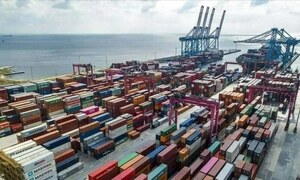Central banks will sell $1.5 trillion foreign exchange reserves by the end of next year as they try to counter capital outflows stemming from slowing growth in China, low oil prices and an impending rise in US interest rates, Deutsche Bank said on Tuesday.
This would mark a major shift in global capital flows, ending two decades of reserve accumulation by emerging markets and potentially forcing the Federal Reserve into slowing down the unwinding of its "quantitative easing" crisis-fighting stimulus.
George Saravelos, currency strategist at Deutsche and co-author of the report, said the $1.5 trillion estimate is based on the pace that emerging markets - especially China - have been drawing down their FX reserves recently to counter capital flight. "The risks are it's actually faster than that," Saravelos said. Also on Tuesday, analysts at Dutch bank Rabobank published a report estimating that China sold up to $200 billion of reserves in the last few weeks of August alone.
China is by far the biggest holder of FX reserves in the world with around $3.65 trillion, mostly thought to be in dollar-denominated assets like US government bonds and bills. Last year, it had almost $4 trillion. China and emerging markets led the build up in global FX reserves following the 1997 Asian crisis to a peak of $12 trillion last year. This cash pile shielded them from the 2007-08 crisis, and looks like it is once again being deployed.
The Deutsche estimate is the latest of many from analysts trying to determine just how much China's slowdown and recent currency devaluation, low commodity prices, the prospect of higher US rates and recent market volatility will deplete global reserves. Bond and currency markets will feel the impact. "The peak in bond demand is probably behind us. QE in the US has stopped, and the shift in global reserve accumulation has started too," he said.
BR100
11,813
Decreased By
-53.2 (-0.45%)
BR30
35,707
Increased By
9.7 (0.03%)
KSE100
113,378
Decreased By
-770.4 (-0.67%)
KSE30
35,674
Decreased By
-277.8 (-0.77%)

























Comments
Comments are closed.